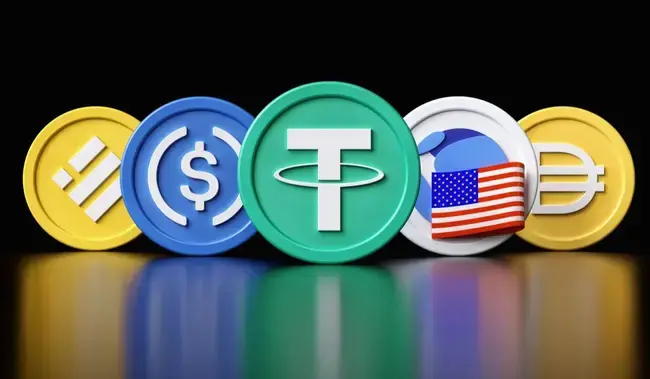Highlights:
- Major US banks explore creating a joint stablecoin as crypto gains wider acceptance.
- Banks worry stablecoins may take deposits and disrupt payment control, especially from tech firms.
- Senate passes GENIUS Act setting clear stablecoin rules to ensure safety and dollar backing.
For a long time, banking giants didn’t believe in crypto and saw it as unsafe and untrustworthy. However, times are changing. As digital assets gain legitimacy and political attitudes evolve, America’s biggest banks are reportedly exploring the creation of a joint stablecoin. According to the Wall Street Journal, banks like JPMorgan, Bank of America, Citigroup, and Wells Fargo are in early talks about creating a joint stablecoin.
The discussions reportedly involve companies they partly own, including Early Warning Services (EWS), the firm behind the Zelle payment system, and The Clearing House (TCH), which runs a real-time payments network. EWS is owned by seven leading US banks, such as Bank of America, JPMorgan Chase, and Wells Fargo. TCH is controlled by about twenty-four of the biggest global banks, which also include these same three.
Banks want to keep their money and customers safe. They worry that stablecoins, which are digital dollars tied to the US dollar, could take money away from them. Stablecoins might also change how people pay for things. Banks are especially worried if big tech companies or big stores start using stablecoins. This could make banks lose control over important parts of payments and money management.
Exclusive: Major U.S. banks are exploring a joint stablecoin to compete with the crypto industry https://t.co/PaPmSdEOjh
— The Wall Street Journal (@WSJ) May 23, 2025
Senate Advances GENIUS Act
Interest is growing as US lawmakers move forward with new rules. This week, the Senate passed the GENIUS Act, a bill that sets clear regulations for banks and other companies issuing stablecoins. The full Senate is expected to hold a final vote on the proposed legislation in the next few weeks.
The law sets rules for reserves and clear reporting and requires they must be fully backed by US dollars or similar assets. Issuers with over $50 billion must have yearly audits. The bill also includes rules for stablecoins made outside the US. It also makes sure issuers follow anti-money rules.
Agreed to in a 69-31 vote.
Now on to the amendment process… https://t.co/qzO9XX8a3P
— Eleanor Terrett (@EleanorTerrett) May 21, 2025
The goal is to keep stablecoins safe and support the US dollar worldwide. Although the GENIUS Act has support from both parties, some Democrats want to look into President Trump’s connections to crypto before approving the bill. Following President Trump’s endorsement of stablecoins tied to the U.S. dollar, he and his sons became involved with World Liberty Financial, a crypto company that introduced the USD1 stablecoin.
Stablecoin Push by Big Banks Threatens USDC and Tether, Says Crypto Expert
Crypto industry veteran Arthur Hayes views the stablecoin initiative by major banks as a significant challenge to established market leaders such as Circle (USDC) and Tether (USDT). Reflecting on this development, Hayes remarked, “Bye bye Circle. Thanks for playing.”
Bye bye Circle. Thanks for playing. https://t.co/LmFPrv6KZK
— Arthur Hayes (@CryptoHayes) May 23, 2025
Hayes said banks’ new stablecoin could threaten also USDC. Meanwhile, Circle might be talking with Ripple and Coinbase about selling the company. Experts say big companies want to buy Circle because it has many users, works with blockchain apps, and handles a lot of money. USDC is valuable because it’s used a lot in decentralized finance (DeFi).
Best Crypto Exchange
- Over 90 top cryptos to trade
- Regulated by top-tier entities
- User-friendly trading app
- 30+ million users
eToro is a multi-asset investment platform. The value of your investments may go up or down. Your capital is at risk. Don’t invest unless you’re prepared to lose all the money you invest. This is a high-risk investment, and you should not expect to be protected if something goes wrong.






